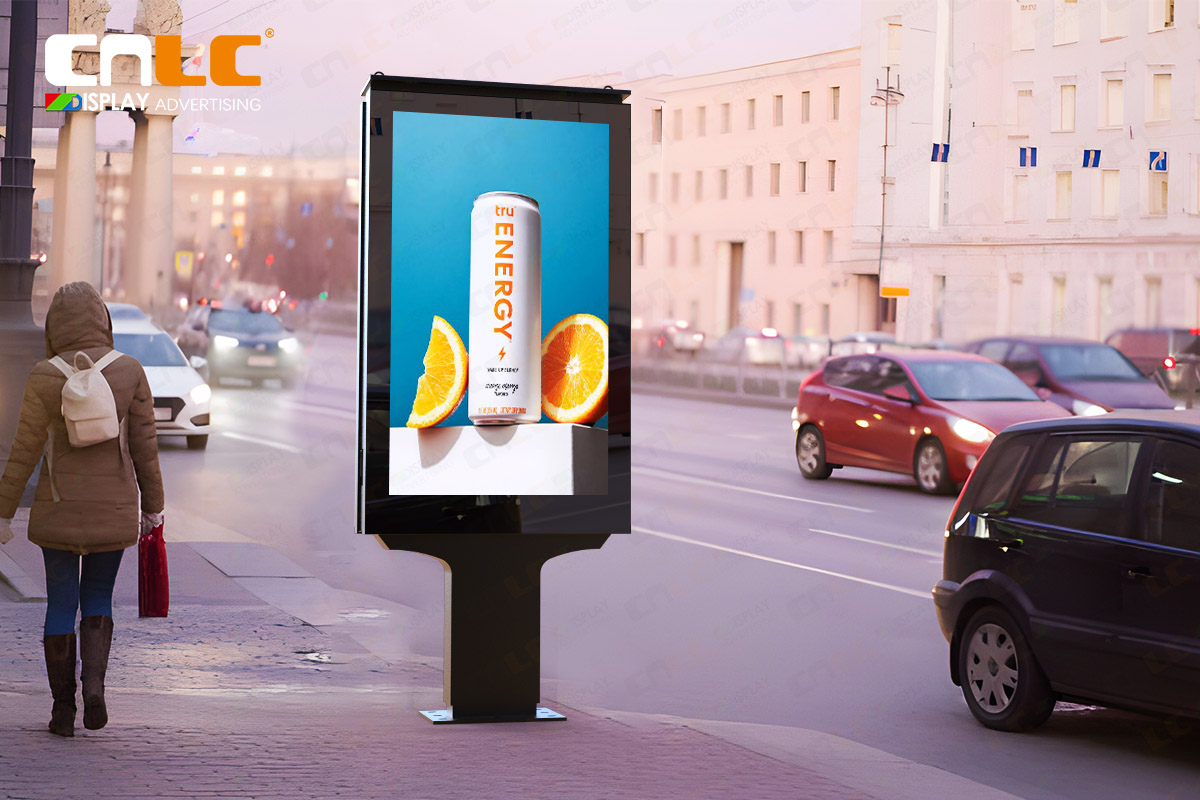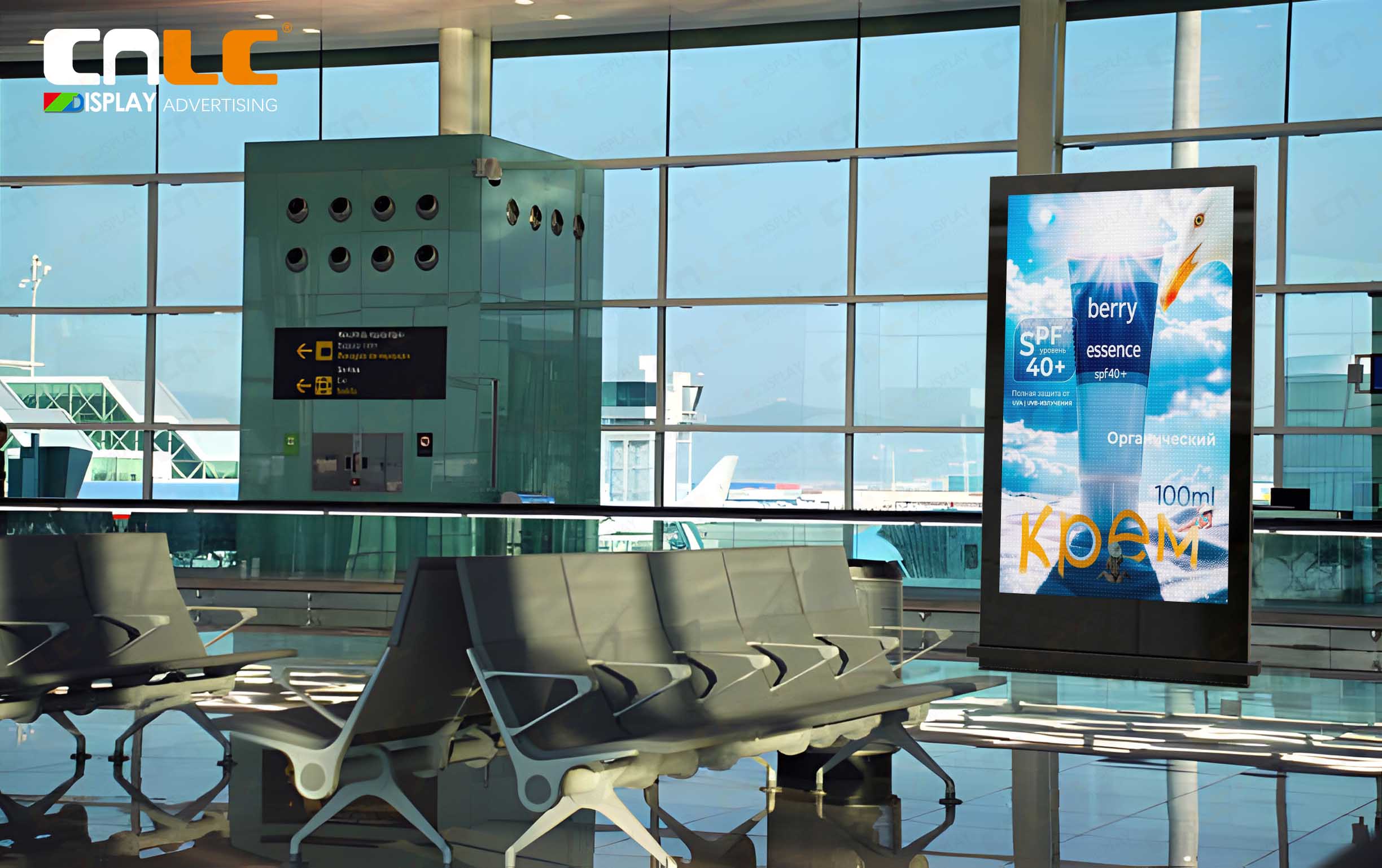Evolution of Mupi From Static Advertising to Smart City Infrastructure
Mupi (Multipurpose Information Panel for Urban Environment) is an outdoor lcd display device used in public spaces. Initially designed for advertising, city maps, and public information, Mupi has evolved from a simple information display tool into an indispensable part of smart cities. CNLC's Mupi products, with features like aluminum casing, high brightness display, touch interaction, and IK10 glass, represent the forefront of innovation in smart and durable urban infrastructure. This article introduces the basic concept of Mupi, reviews its development history, and explores its evolution in digitalization, intelligence, and multifunctionality.

What is Mupi?
Mupi, short for "Multipurpose Information Panel for Urban Environment," is typically installed in public spaces such as bus stops, subway stations, and city squares. Traditional Mupis appeared in the form of lightboxes and posters, used for advertising and public information dissemination. Modern Mupis, however, integrate digital display technology and smart interactive functions, serving not only as advertising tools but also providing various urban services, such as information queries and public transportation guidance. Mupis are usually 1.2 meters wide and 1.8 to 2 meters high, designed for durability and visibility to withstand various outdoor environments.
1. Origins and Early Development (1970s)
Mupi first appeared in Europe during the 1970s, initially aimed at providing static advertisements and information in urban public spaces. Early Mupis were simple structures, mainly consisting of lightboxes and paper posters. Due to their convenience and effectiveness, these devices quickly gained popularity across major European cities, becoming the primary tools for urban advertising and information dissemination.
2. Digital Transformation (1990s-2000s)
With advancements in digital display technology, Mupi began to undergo digitalization in the 1990s. The application of LCD and Outdoor LED screens enabled Mupi to display dynamic images, making advertisements richer and more engaging. Digitalization allowed advertisers to remotely control and update content via the internet, significantly enhancing the flexibility and timeliness of advertisements. During this period, Mupi transitioned from a static advertising tool to a dynamic information display platform, becoming an integral part of the modern urban landscape.
3. Smart Features and Interactive Functions (2010s)
Entering the 2010s, Mupi became increasingly smart, integrating high-tech equipment like touch screens, sensors, and cameras to enable interactive functions. CNLC's Mupi products not only feature touch screen functionality but also incorporate high brightness display technology, ensuring clear visibility under various lighting conditions. Moreover, CNLC's products are equipped with IK10-rated glass, further enhancing the durability and security of the devices. These smart features not only improve user experience but also expand the application scenarios of Mupi, making it a crucial tool in smart city management.
4. Multifunctionality and Eco-Friendly Design (2020s to Present)
Modern Mupis go beyond information display, combining various urban service functions such as Wi-Fi hotspots, phone charging stations, and air quality monitoring. With the growing awareness of environmental protection, many Mupis now utilize solar power and low-energy display technologies to reduce their environmental impact. CNLC's Mupi products adopt efficient cooling systems and aluminum casings to ensure stable performance during prolonged operation while reducing energy consumption. These features not only enhance the multifunctionality of the devices but also align with modern cities' green development goals.
5. Future Prospects
Looking ahead, Mupi is expected to continue evolving, integrating cutting-edge technologies such as AI, big data, and VR/AR to achieve higher levels of intelligence and personalization. For example, by analyzing urban data in real-time through AI, Mupi can automatically adjust advertisement content or provide precise urban services. CNLC's Mupi products have already laid a solid foundation for this evolution, with high brightness displays, sturdy aluminum casings, and IK10 glass ensuring the devices' continued importance in future smart cities. Additionally, the application of AR/VR technology will bring a more immersive interactive experience to Mupi users, further enhancing its role in smart cities.

Conclusion
The development of Mupi, from static information panels in the 1970s to modern devices integrating digital displays, smart interactions, and multifunctional services, illustrates significant advancements in outdoor advertising and urban information dissemination. With ongoing technological innovations, Mupi will continue to evolve, providing crucial support for smart city construction and becoming an essential component of urban informationization and intelligence. CNLC's Mupi products, through continuous innovation in smart features, durability, and multifunctionality, are leading the way in this field.